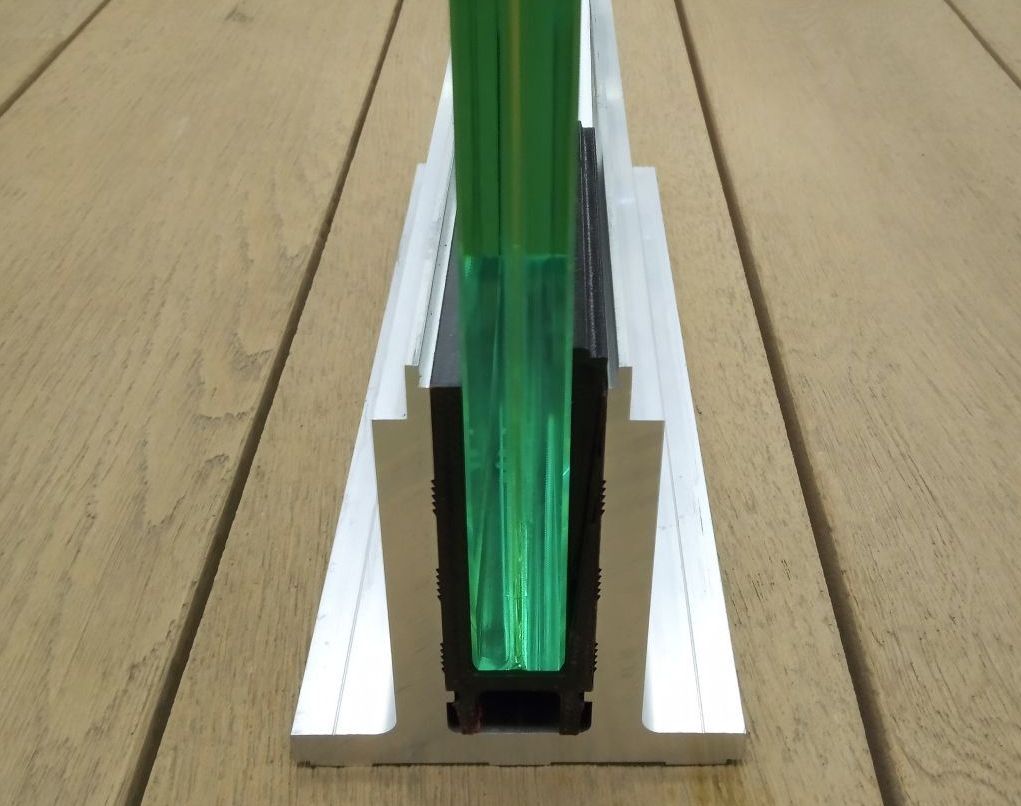With an almost-there appearance, you’d be forgiven for thinking that a Frameless Glass balustrade is less substantial than a framed balustrade system. After all, where the system is recessed below the floor the lack of obvious structure makes these glass railings look unsupported. But that’s not the case. Every Balconette Frameless Glass balustrade is supported by a combination of anodised aluminium base shoe and laminated glass.

Building regulation requirements
All of our balustrade systems are suitable for residential use. Balustrades fitted to homes are subject to British Standard 6180. This states that the handrail for a balustrade in a domestic setting should be able to withstand 0.74 kilo Newtons (kN) for every metre length. That’s the equivalent of having a series of people each weighing 75kg, one metre apart from another, resting their full weight against the handrail.
How are glass balustrade base shoes installed?
There are two options for fixing the base shoe to the surface on which the balustrade will stand. It can be installed above the floor surface or beneath. Fixing the base shoe beneath the floor surface provides a seamless appearance. Fixing the base shoe above the ground creates an obvious channel which helps delineate between areas. Base shoes installed above floor level are fitted with a decorative cover plate for a neat appearance. There is no difference in the structural integrity provided by either of these options.

In both situations, the base channel is bolted to the surface on which it stands – this should be a structural surface such as steel or concrete. Attaching a structural glass balustrade to a substrate that is less strong than the balustrade itself may damage your property should the balustrade be subjected to heavy loads.

Nice to read. So useful and informative tips. Many thanks for sharing them all.